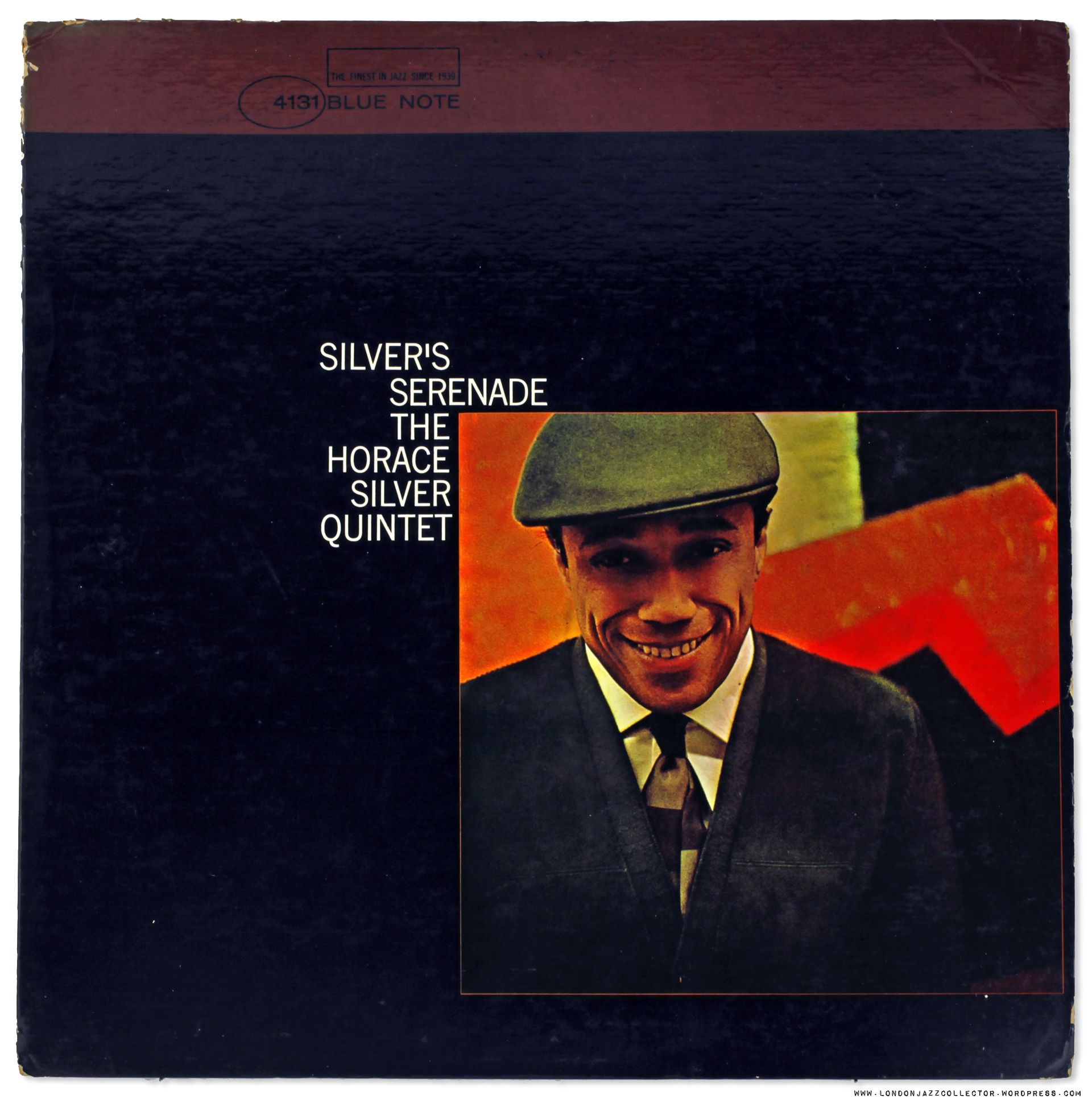
Selection: Let’s Get To The Nitty Gritty (Silver)
. . .
Track List BLP 4131
A1 Silver’s Serenade 9:21
A2 Let’s Get to the Nitty Gritty 7:24
B1 Sweet Sweetie Dee 7:34
B2 The Dragon Lady 7:04
B3 Nineteen Bars 6:21
Artists: Horace Silver Quintet
Blue Mitchell, trumpet; Junior Cook, tenor sax; Horace Silver, piano; Gene Taylor, bass; Roy Brooks, drums; recorded Van Gelder Studio, Englewood Cliffs, NJ, May 7-8, 1963, released July/August 1963
A month before this recording session, in April 1963, several of these tracks were also recorded at Englewood Cliffs by an expanded line up, Horace Silver Tentet, including Kenny Dorham and Jimmy Heath. For some reason that session was rejected, possibly conflicting artist contractual obligations, and only the Quintet versions released, on BLP 4131.
Horace had been one of the founding voices of bop and its transition to hard bop in the early ’50s, recording with all the pioneers Stan Getz, Lou Donaldson, Coleman Hawkins, Howard McGhee, Sonny Stitt, Art Blakey, Art Farmer and Miles Davis, This experience was absorbed, informs his response to rhythmic and harmonic opportunities with the keyboard in front of him.
The Cook-Mitchell front line eventually went their own way, Silver tethered Joe Henderson and eventually Woody Shaw, as ever, impeccable taste. Horace Silver retreated in the 70’s and 80’s, returning to recording in the ’90s, eventually earning the epithet, Horace Silver, The Hardbop Grandpop. Silver’s legacy is an essential part of the classic “Blue Note” catalogue.
I remember Horace’s passing in 2014, age 86, at which time I had posted on each of his Blue Note albums except this one; an omission now made good.
Music
Industry reception – Billboard:
The Billboard “review” : lists the names of all the musicians in the quintet, lists the titles of all the songs on the album, in quotes, adds comment that “people who like Horace Silver will find lots here that they like”. Summary: First Rate Wax. Review put to bed, next album please . . . (rolls eyes)
A little more insightful: “These five Silver tunes epitomize his compositional style: captivating melodies, sophisticated harmonies, and intricate rhythms with an unerring sense of swing” (Tone Poet); “Funky, soulful, finger poppin’, bluesy, grooving and relaxed all in one” (Amazon reviewer 2012 CD edition); “Silver’s naturalistic trumpet sounds carpal” (Whoops Juno? Silver’s piano’s not bad either, if slightly carpal) wtf is “carpal”?; “Horace’s piano smiles, always a happy sound” (LJC)
Everything revolves around the piano, an all-encompassing rhythm section which gives the horns the opportunity to build on the the groove. Blue Mitchell and Junior Cook are perfect for the Silver Quintet, swinging without taking over, or showing off, but adding well-judged solo improvisations, everybody working together, uplifting.
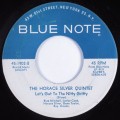 The timely 45rpm single release for juke box paired Silver’s Serenade with Let’s get Down To The Nitty Gritty. The Serenade feels like it belongs on board Hancock’s Maiden Voyage, while Nitty Gritty is a pacey marching song blues-walk in which Junior Cook stands in for Hank Mobley, Blue Mitchell understudies for Freddie Hubbard. I think Amazon’s reviewer got it about right, “finger-poppin’ !“.
The timely 45rpm single release for juke box paired Silver’s Serenade with Let’s get Down To The Nitty Gritty. The Serenade feels like it belongs on board Hancock’s Maiden Voyage, while Nitty Gritty is a pacey marching song blues-walk in which Junior Cook stands in for Hank Mobley, Blue Mitchell understudies for Freddie Hubbard. I think Amazon’s reviewer got it about right, “finger-poppin’ !“.
Vinyl: BLP 4131
Mono vinyl, NY labels, VAN GELDER mastering stamp, Plastylite pressing, no DG, Cohen says original pressing should be DG Side 1.
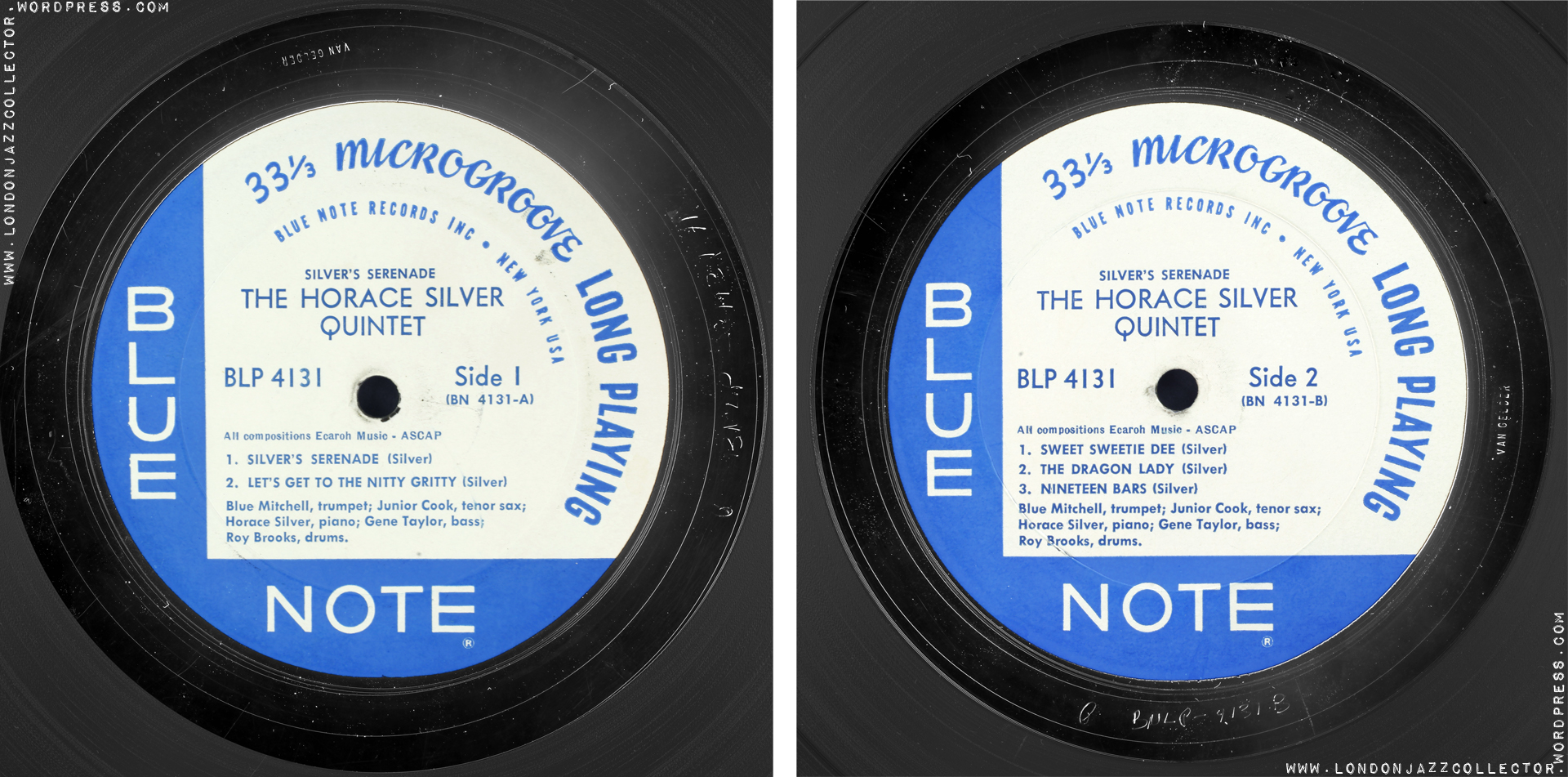 Inner Sleeve: Type 4 (4070-4130; Dec’62 – Sep’63)
Inner Sleeve: Type 4 (4070-4130; Dec’62 – Sep’63)
4131 was released between July and August 1963 (timing of Billboard musical spotlight reviews). Type 4 inner sleeve (Don Wilkerson Preach Brother, Col1, row 5) within the period of use of this design though on the wrong side of the catalogue number range cited for this inner, by one. May be original pressing, given the fluid nature of consumable items at the pressing plant, notwithstanding the absent DG side 1 (see comments below)
OK, cover’s a bit grubby, and the corners aren’t exactly sharp, but it sounds g r e a t, because that’s what Van Gelder mono does.
Collector’s Corner
Our friends at Tone Poet have a very nice gatefold of Horace’s Silver Serenade just out April 2024, a coincidence I’m sure. Stereo I expect.
Nice though the gatefold is, I have already also got a stereo copy – pressed for Liberty from Van Gelder’s stereo master. I guess 1967 because Liberty have printed fresh “Division Of Liberty” labels, printed by the old Blue Note supplier Keystone Printed Specialties, according to the fonts used. There is also a generic Liberty inner sleeve. The one unfamiliar thing is a ghostly hand etching “114” in the runout both sides.
Not seen that on All Disc pressing (Update) – apparently, various three digit number combinations have been seen on All Disc pressings. This 114 close up captured on my mobile. The etching is scratched, not very noticeable unless you look hard, clearly not present on the Van Gelder original metal. One for pixel-peepers, but look harder.
LIBERTY STEREO (1967?)
Listen to Selection 2, Liberty Stereo : Let’s Get To The Nitty Gritty
. . .
The other thing that is odd is the Liberty stereo is about 20% lower gain/volume. I’ve left the volume setting the same between the mono and the stereo, for comparison. Must be a feature of the original Van Gelder stereo mastering. Was this Van Gelder anticipating Kevin Gray mastering choices? This may be one of the few times I have ripped the mono and stereo edition side by side, and noticed the difference in output strength. Odd.
So, any Tone Poet aficionados comment on this latest release by Poet-People? Floor is yours.
Gossip Corner (new!)
Shock horror, Mobile Fidelity in sudden outburst of honesty. Have lessons actually been learned?
 Putting aside the marketing word-salad, probably confected with the help of Bing Co-Pilot GPT AI Chatbot, I read “DSD 64 ” (Digital Stream Data) intermediary stage between 1957 source tape and remastering 2024 for vinyl. Whatever the word-salad says, the final product is mastered from a digital file, plain and simple. Informed consent, at least you now know what you get from MoFi. Have the Hoffperson crowd weighed in?
Putting aside the marketing word-salad, probably confected with the help of Bing Co-Pilot GPT AI Chatbot, I read “DSD 64 ” (Digital Stream Data) intermediary stage between 1957 source tape and remastering 2024 for vinyl. Whatever the word-salad says, the final product is mastered from a digital file, plain and simple. Informed consent, at least you now know what you get from MoFi. Have the Hoffperson crowd weighed in?
NEWS UPDATE April 21, 2024
“We are heartbroken by the news that our dear friend, the revered producer & Blue Note historian Michael Cuscuna has passed away at age 75.”
Many people spend their time trying to enrich themselves. Cuscuna managed the trick of enriching us, immeasurably. That is a rare achievement, we are all grateful to you, Michael, let the Blue Note music play.
LJC

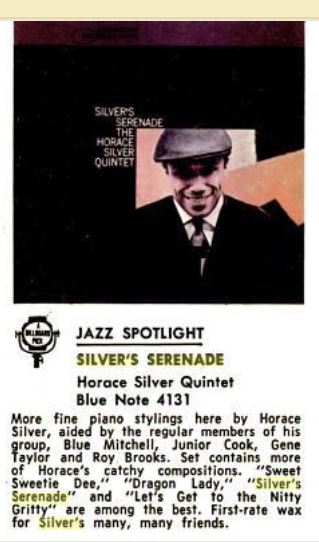
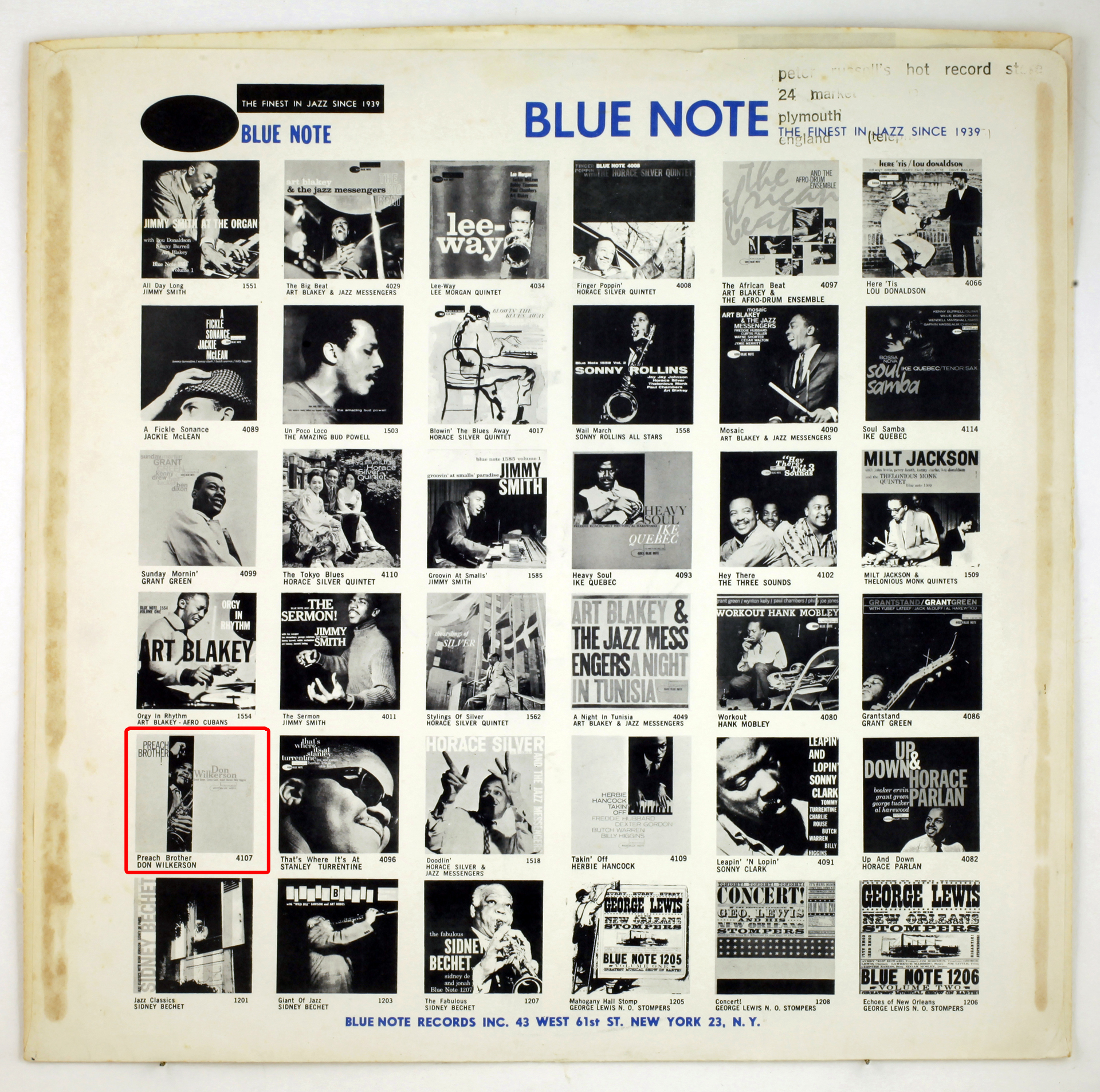
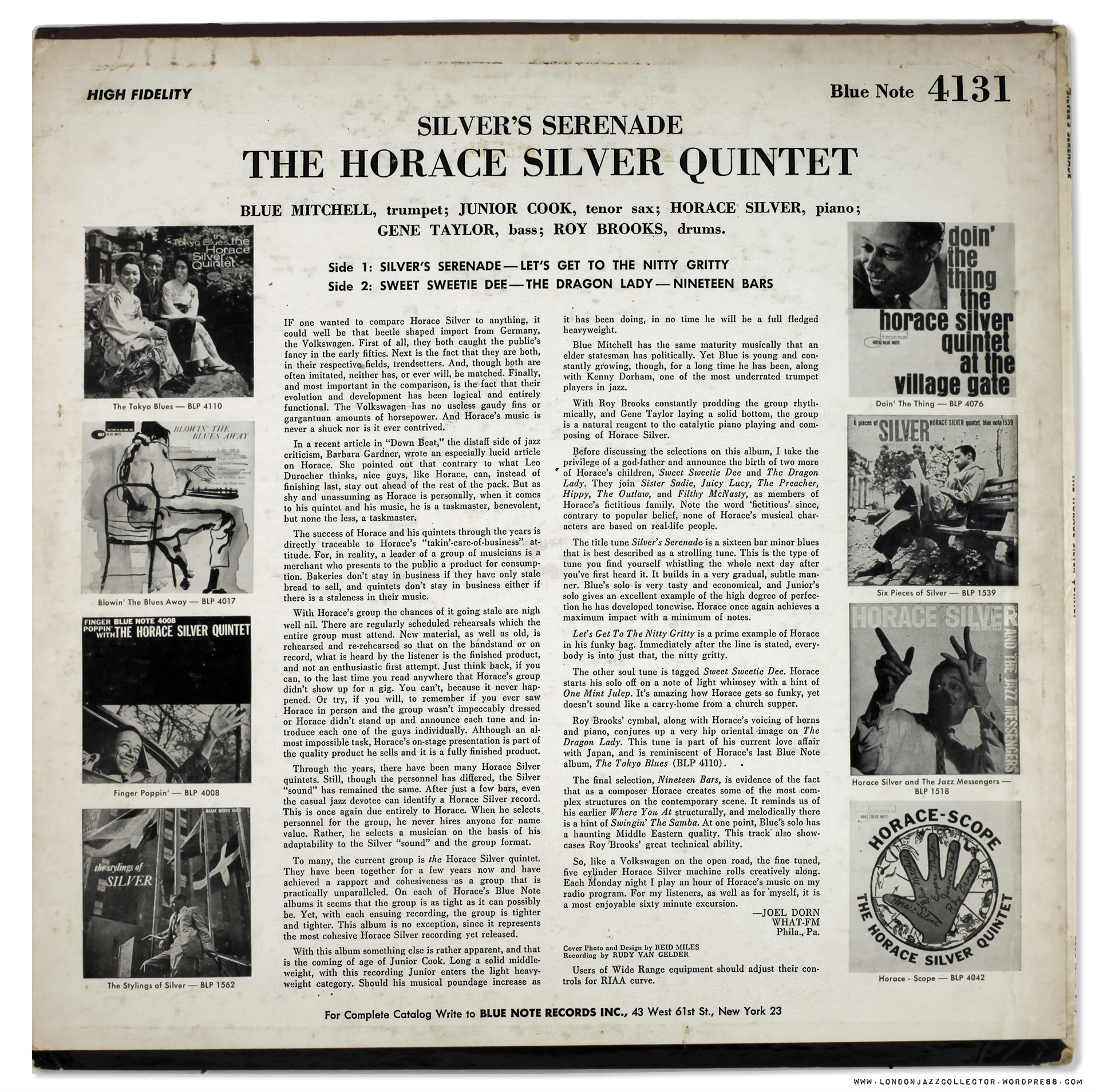
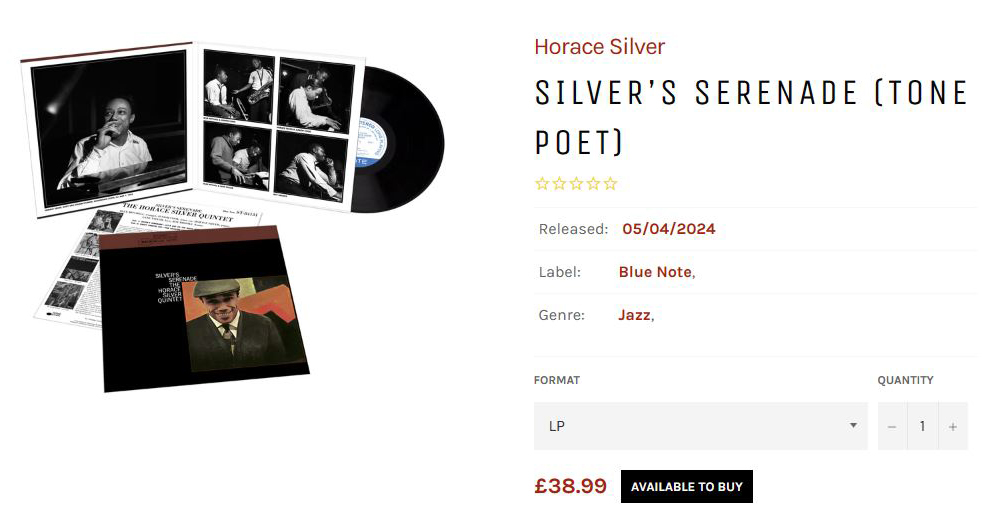
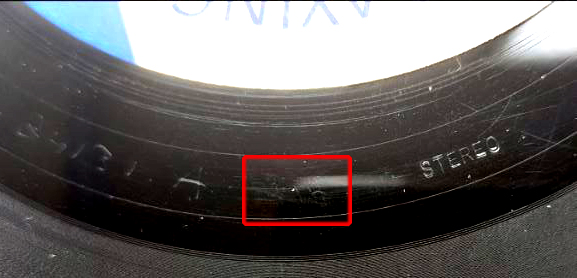




I think this was the first ‘ear’/p pressing I picked up, which is consistent with it being one of the ‘low-hanging fruit’ of the pre-Liberty Blue Note catalogue.
Do you think, LJC, that cover art affects collectability and prices? This might sound daft, but Silver’s Serenade is a ropey bit of sleeve design (except for Horace’s beatific smile greeting us) that also arguably makes it look later than 1963, and I wonder if this further pushes down the appeal/price of an artist whose market prices are comparatively very reasonable anyway?
I find the relationship between cover art and collectability fascinating – I can’t imagine anyone felt their pulse racing upon finding a copy of Stanley Turrentine’s Dearly Beloved in the bins – it’s the antithesis of Blue Note cool! – but the design for his label debut Look Out! is much more like it and looks attractive for those of us who are lukewarm about Turrentine.
LikeLiked by 1 person
Poor cover design breaks the link between what you see and what you hear, and has certainly put me off buying some records. One of my favourite posts a few years back (2015) was The Worst Jazz LP Covers Ever:
https://londonjazzcollector.wordpress.com/2015/12/27/the-worst-jazz-lp-covers-ever/
Whether it affects the value of vintage albums in the collector market is arguable. I’m sure Stan has his fans, but Turrentine’s albums pull off the feat of being both musically and visually unattractive, which prices reflect.
Horace Silver is more complex, always great music. It looks to me that Silver Serenade had Reid Miles for once stumped for a big idea for the cover design. Perhaps it was a poor choice of album title that drew a blank response, which is how I read that cover. You are left mulling over Silver’s choice of hat, may well have reduced its desirability
Can’t fault any Jackie McLean covers with giant hyperactive text. I just wish Blue Note had continued laminating covers, which they stopped in late 1963. Blue Note covers with that dimpled reflection are so are sensual
LikeLike
Dear LJC, I’m confused when you say “…Silver retreated in the 70’s and 80’s, returning to recording in the ’90s.”
In the 70s he recorded the United States of Mind trilogy, all his “Silver ‘N Brass, Woods, Voices, Percussion, Strings” etc records, and In Pursuit of the 27th Man. Then in the 80s he released about five new recordings and a couple old live dates on his Silveto imprint. These years weren’t the peak of his output, but I own and enjoy most of it. Especially the United States of Mind records.
LikeLike
forgive but I have to point out that the “mofi Miles” are really well done, I have most of them and can tell you they have earned a spot in my collection
BK
LikeLike
I have offered no opinion how they sound, I’ve not heard one. Do you have the original for comparison? Just asking.
If the MoFi sound good to you, then that is all you need.
LikeLike
probably half, I’m not a fan of late 70’s Columbia pressings and the shootouts (on my system) were obvious.
I understand the issue people have with source, I just want a great sounding record
I’m knee deep in the 45 rpm rabbit hole which doesn’t help matters
BK
LikeLike
Dear LJC, great post, just one question; I hear quite some distortions on the mono sound sample. I have some nice BN mono originals, but I believe my stereo cartridge (Ortofon black) is giving me problems during playback which sound similar to this. Are you perhaps using a stereo cartridge? What is your experience/ advice in this regard?
Greetings from Bruxelles.
Marijan
LikeLike
I set the gain on my rips up to but not beyond the point of overload. Some people have commented I should leave some headroom, by setting the volume well below the maximum. Distortion may be an artefact of ripping, not on the record, I don’t know, and it is not critical – there are so many factors in recording and playback I am not resourced to provide proof of audio-quality, you need to do your own comparisons.
LikeLike
My copy of 4031 is DG side 1 only. Unfortunately I do not have a cover, just the LP. You inspired me to pull my copy and listen at the earliest opportunity.
Keep up the GREAT work !
LikeLike
Per the All Disc Records, Inc. Discogs page:
“Visual identifiers: Etched number usually preceded by “#”, and often mirrored in runouts: “22”, “33”, “44”, “66”, “77”, “88”, “111”, “114.”, “122”
LikeLiked by 1 person
Blimey, that’s a new find for me, well spotted, Aaron. I only noticed this one after a very close exam. Helpful signpost to distinguish All Disc pressings. Back of my mind, where does the number fit in the manufacturing process? It is not on the Van Gelder metal/ lacquer. If it was applied to the stamper it would be much more obvious. So what does it mean and who applies it?
LikeLike
Here in Philadelphia (and I’m sure elsewhere, too) Horace Silver records represent a unique “sweet spot” for collectors at the shops. They’re frequently available, often affordable, and the quality of the music is exceptional. I can find Jimmy Smith or 3 Sounds originals reliably, but I rarely listen to them. I find myself spinning Horace Silver all the time!
LikeLike
I am on a Horace Silver run lately as well – I picked up an early mono repress of Tokyo Blue which I can’t stop playing. I recently bought a dedicated mono turntable with a mono cart (Hana) which has changed my listening forever.
LikeLike
Hello LJC, very nice job as usual. I also am fortunate enough to have mono and stereo copies of this record. I have what looks to be the same original mono copy. No DG, NY USA, van gelder stamp, ear, laminated cover. Unfortunately I don’t have the original inner. My stereo copy is a UA blue label white b with van gelder stamp. It looks like it has a faint 77 in the deadwax???
LikeLike
I have this record and side one is deep groove. Does that make sense?
LikeLike
Duh! I forgot to check Cohen, who lists the “original” 4131 as DG Side 1. Far be it for me to disagree with Fred, but the correct inner sleeve corroborates pressing at about the same time as the “original” was pressed. Inner sleeve is circumstantial evidence of pressing dates, but people have been hung on less.
Fred’s “1st pressing run” requires there to have been an uninterrupted pressing on a single machine for the total quantity of records manufactured for the initial release. Anything else (second machine, change of stampers, multiple batch production) potentially drives a coach and horses through the rigid single form of “the original”, like a different combination of stamper dies.
Put me down as sceptical, but I’m on a loser here, people want certainty and that’s what Fred’s classification offers. DG Side 1 has it.
LikeLike